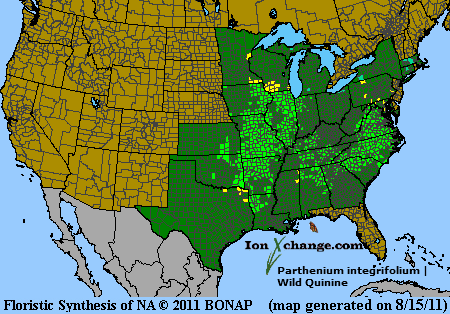 Loading... Please wait...
Loading... Please wait...- Home
- SEEDS
- SEED MIXES
- BUY PLANTS
- Info Request
-
Educational Videos
- Greenhouse Transplanting Demonstration
- Native Seed Cleaning demonstration at Ion Exchange Native Seed and Plant Nursery
- Attracting Butterflies
- Bidens - Bidens cernua Harvest Video
- Big Blue Stem Harvest
- Butterfly Milkweed Video
- Button Blazingstar - Liatris aspera Video
- Buttonbush - Cephalanthus occidentalis Video
- Canada Anemone - Anemone canadensis Harvest Video
- Cardinal Flower - Lobelia cardinalis Video
- Control Burn - Wildflower Field
- Cream Gentian - Gentiana flavida
- Culver's Root - Veronicastrum virginicum Video
- Cup Plant - Silphium perfoliatum Video
- Dormant Seeding | Planting
- Earthyman's Favorite Wildflowers Video
- Eco-Friendly Golf Course Seed Mix
- Floating Islands
- Fringed Loosestrife - Lysimachia ciliata Video
- Giant Yellow Hyssop - Agastache nepetoides Video
- Indiangrass - Sorghastrum nutans Video
- Iowa Prairie Partner Program
- Leadplant - Amorpha canescens (Potted) Video
- Meadow Blazingstar - Liatris ligulistylis
- Midland Shooting Stars - Dodecatheon meadii Video
- Native Plant Nursery Field Irrigation Experiment
- Nodding Onion - Allium cernuum Video
- Ohio spiderwort - Tradescantia ohiensis Video
- Old Man's Beard - Clematis virginiana blooms Video
- Oxeye Sunflower - Heliopsis helianthoides Video
- Prairie Spiderwort - Tradescantia bracteata
- Purple Coneflower - Echinacea purpurea Video
- Rain Garden or Water Garden Video
- Rattlesnake Master - Eryngium yuccifolium Video
- Riverbank Stabilization - Wetland Plants
- Rose Mallow - Hibiscus militaris Video
- Rosinweed - Silphium integrifolium Video
- Royal Catchfly - Silene regia
- Showy Tick Trefoil - Desmodium canadense Video
- Sneezeweed - Helenium autumnale Video
- Swamp Betony - Pedicularis lanceolata Video
- Swamp Milkweed - Asclepias incarnata Video
- Sweet Blackeyed Susan - Rudbeckia subtomentosa Video
- Tall Coreopsis - Coreopsis tripteris Video
- Urban Butterfly Garden
- Wild Bergamot - Monarda fistulosa Video
- Wild Geranium - Geranium maculatum Harvest
- Wild Goldenglow - Rudbeckia lanciniata Video
- Wild Petunia - Ruellia humilis Harvest Video
- Woodland Knotweed - Polygonum virginianum Video
- Yellow Coneflower - Ratibida pinnata Video
- Blog
- Resources
- Policies
Contact Us
Phone:
563-419-0837
or 563-535-7231
Email:
hbright@ionXchange.com
Browse Products
Add to Wish List
You Recently Viewed...
Our Newsletter
Product Description
"Wild Quinine, American Feverfew, Feverfew"
| Sun Exposure | Prairie |
| Soil Moisture | Wet Mesic, Mesic, Dry Mesic |
| Bloom Time |
Summer, Fall June, July, August, September |
| Bloom Color | White |
| Max Height | 4 feet |
| Wetland Code | UPL |
| Germ Code | C(60) |
| Seeds Per Packet | 200 |
| Seeds Per Ounce | 7,000 |
Parthenium comes from the Greek word parthenos, for "virgin", a reference to the infertile disk flowers. Integrifolium is the Latin word meaning "entire-leaved".
Wild Quinine is common to dry areas of prairies and open woods across most of the United States. White flowers appear from May to September and it can attain 4 feet in height. Basal leaves are quite large. up to a foot long and 4 inches wide. Leaves alternate on the stem and become prgressively smaller as they near the top of the stem. The flower heads are often described as looking like a small head of cauliflower.
Native Americans made a tea from the leaves to treat fevers and the Catawbas of the Eastern seaboard used the leaves to treat burns.
Edible Uses: Unknown
Medicinal Uses: A poultice made from the fresh leaves is applied to burns.
The root is used in the treatment of inflammation of the urinary passages and kidneys, amenorrhoea and as a lithontripic. The flowering tops are used as a substitute for quinine in the treatment of intermittent fevers. One study suggests that use of the plant might stimulate the immune system.
Herbal Uses: Unknown












